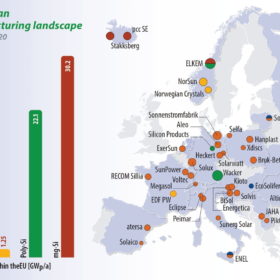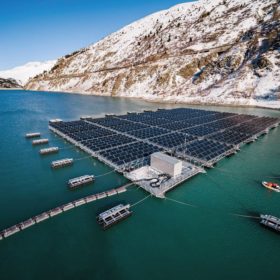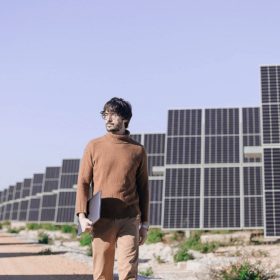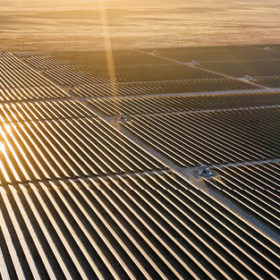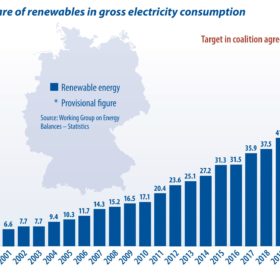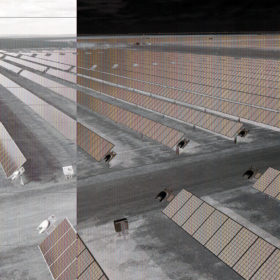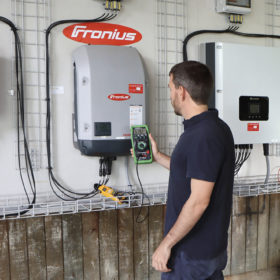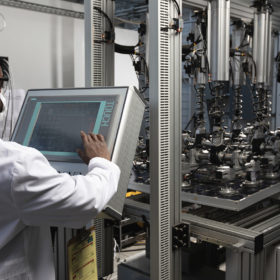The time is now
European solar manufacturing is back on the agenda after over a decade of minimal activity. Ambitious proposals are in place to reactivate a booming industry with investment earmarked, factories planned, sustainability goals announced, and political strategies outlined to support the projected growth of PV installations. Can these plans be realized? The UP Initiative will spend the second quarter delving into these questions.
Waterproofed
Floating PV is now an established and rapidly growing niche, but its special requirements demand special standards. Jan Mastny, head of sales at Studer Cables AG, says the company’s new floating-specific cable is just such a solution, and the judges for pv magazine’s 2021 Award agreed, as they chose the innovation as a runner-up in the BOS category.
Fast-changing PPA landscape
Power purchase agreements are ideal risk-management tools, given that electricity price volatility is the new normal and renewables uptake is a matter of urgency due to untenable Russian gas dependency. pv magazine sat down with Andy Sommer, team leader of fundamental analysis and modeling at Swiss trader Axpo Solutions, to discuss the situation of prices and PPAs in Europe.
Power losses increasing, on closer inspection
A study by Raptor Maps has shown that yield losses are increasing as anomalies in inspected PV power plants continue to go up. Eddie Obropta, the co-founder and CTO of Raptor Maps, reports that string-level anomalies are impacting power output adversely.
From fragility to opportunity, via solar
The Desert to Power Initiative, spearheaded by the African Development Bank (AfDB), aims to provide clean, reliable electricity to 250 million people across 11 countries in the Sahel region of Africa. This will involve up to 10 GW of solar, along with a backbone of transmission infrastructure spanning much of the continent from east to west. pv magazine recently met with Daniel Schroth, the bank’s director of renewable energy and energy efficiency, to discuss the initiative.
What a sunny day can teach us
In mid-July, 10 global and European organizations with decades of experience in energy markets released an open letter regarding the REPowerEU plan and the urgent need to rethink the structure of European energy markets. The letter outlined why Europe needs a rapid rollout of technologies that increase grid flexibility, such as battery-based energy storage, and strong targets and policy frameworks for support. Lars Stephan, policy and market development manager (EMEA) at Fluence – the lead organization behind the letter – provides a real-life case study from the German energy market.
Facing the heat
Lithium-ion batteries come with fire risks that the burgeoning renewable energy industry is not used to. For some that presents a false dichotomy where any fire in a battery project is a clear sign of future flammable failures, which can make it appear that all batteries are too risky to be used widely at large scale. The reality, writes Jamie Shaw-Stewart of Everoze, is that while Li-ion battery fires are a real risk, this risk is manageable as we learn more about the fires themselves and develop more bespoke battery engineering solutions.
Results are in: robotic uprising underway
A first-of-its-kind survey has revealed the extent to which automation and robot module cleaning is being adopted by large-scale PV project owners and operators. And the trend is clear; as solar expands geographically and projects grow, the use of robotics in solar O&M is increasing, and the level of understanding as to their benefits is on the rise. Ecoppia, a pioneer in the robotic cleaning segment, partnered with pv magazine on the survey and the results speak volumes.
Elusive longevity
The expected lifetime of PV inverters is significantly shorter than that of modules. In many projects, inverter replacement is included in financial calculations from the start, despite the high costs. Research is being conducted into the causes of faults to develop more durable inverters and components. But plant design can already improve the lifespan of inverters in use today, reports pv magazine Germany’s Marian Willuhn.
Proofing to avoid PV pandemonium
With each new module generation, we see more energy generated at lower costs. This trend looks set to accelerate with the development of high-efficiency cells such as TOPCon products. Module performance characteristics, provided by manufacturers in “PAN files,” are improving and it seems that this is only the beginning. While everyone wants to hear that their project is going to perform brilliantly, developers should take a balanced approach to manufacturers’ claims and cross check against sound data to make sure that “Peter-Pan” files do not turn projects into PV pandemonium.
